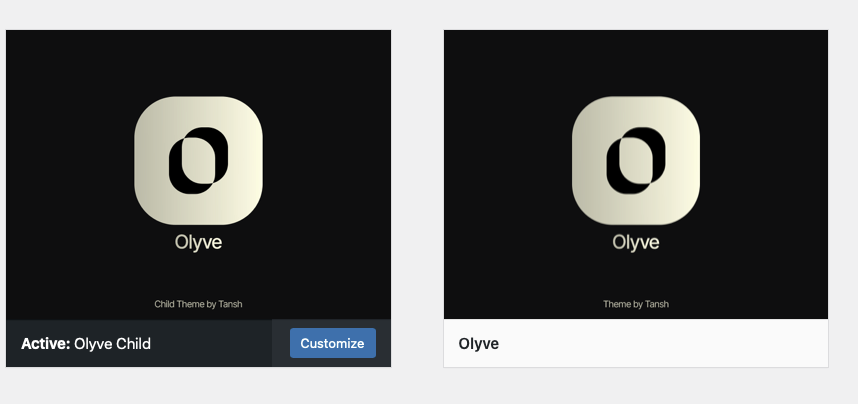What Is a Child Theme in WordPress and Why Should You Use It? (2025)
Updated: October 2025
A child theme in WordPress is a safe layer that sits on top of a parent theme. It lets you customize design and behavior without editing the parent’s files directly. If you’ve ever updated a theme and watched your changes disappear, a properly configured child theme prevents that outcome by separating your custom work from vendor code. This guide explains what a child theme is, why it matters, when to use it, and how to approach setup in a structured, low-risk way.

Table of Contents
What Is a Child Theme in WordPress?
A child theme in WordPress is a theme that inherits templates, styles, and functionality from another theme known as the parent. You keep the parent intact and place your additions—layout adjustments, typography choices, or template overrides—into the child. Because inheritance handles the baseline, you only maintain the differences. The practical benefit is simple: you can update the parent to receive new features and security fixes without losing your customizations.
Why Use a Child Theme in WordPress?
- Resilient updates: Parent theme updates won’t overwrite your work.
- Cleaner maintenance: All custom CSS, template tweaks, and minor experiments live in one organized place.
- Scalable customization: Replace specific templates or extend behavior without forking an entire theme.
- Team-friendly: Designers and developers share a predictable home for changes and documentation.
When You Should (and Shouldn’t) Use a Child Theme
Use a child theme when you plan to go beyond small visual tweaks—changing header/footer layouts, overriding post templates, adding custom logic with hooks, or maintaining a distinctive design system. You might not need one if you’re only adjusting spacing, colors, or fonts. In that case, the Customizer’s Additional CSS (or a global styles tool) is lighter. As soon as you need template files or PHP logic, switch to a child theme.
How to Create a Child Theme in WordPress (No Code)
- Plan scope: Decide whether you’ll change styles only, override templates, or add behavior. This defines which files go into the child.
- Generate a child theme: Use a trusted plugin like Child Theme Configurator for one-click creation.
- Check style order: Parent styles should load before child styles so your changes win consistently. Your performance plugin should not invert this order.
- Document decisions: Keep a brief changelog in the child theme folder (what changed, why, and when).
- Test updates safely: When a parent update arrives, read release notes, test on staging, and enable maintenance mode while updating.
Compatibility & Best Practices for Child Themes
Most modern themes—Astra, OceanWP, Hello, and others—support child themes as long as they follow WordPress standards. Keep custom functions modular and avoid stuffing unrelated logic into theme files. If your custom functionality grows large or isn’t presentation-specific, move it into a site-specific plugin so it remains portable if you ever change themes.
Common Child Theme Pitfalls to Avoid
- Wrong parent reference: The child’s stylesheet header (or configuration) must reference the parent theme’s exact folder name.
- Style priority confusion: If child styles look ignored, ensure the parent stylesheet loads first; clear caches after changes.
- Editing the parent by mistake: Always confirm you’re inside the child theme to avoid losing work on updates.
- Overloading the child: Keep it focused on presentation and theme structure; heavy business logic belongs in a plugin.
FAQ: Child Theme in WordPress (2025)
Will I lose my changes when I update the parent theme?
No. That’s the point of a child theme in WordPress—your edits live in the child, so parent updates don’t overwrite them.
Do I still need a child theme if I only change CSS?
Not always. For a few style tweaks, use Customizer → Additional CSS or the site editor’s global styles. Move to a child theme once you override templates or add PHP.
What’s the easiest way to create a child theme?
Use a reputable generator like Child Theme Configurator, or your theme’s official starter child theme.
My child theme CSS isn’t applying—why?
Usually load order or caching. Ensure the parent stylesheet loads first, then the child. Clear cache/minify plugins and your CDN after changes.
Should custom functionality go in the child theme or a plugin?
If it’s presentation-specific, child theme is fine. If it’s site logic (CPTs, integrations), put it in a site-specific plugin so it survives theme changes.
Further Reading & Resources
- WordPress Theme Handbook — Child Themes (official)
- Child Theme Configurator (one-click generator)
- WP Maintenance Plugin Guide — Safely update parent/child themes
Final Thoughts
A child theme in WordPress is a low-risk, high-control approach to safeguard custom work while benefiting from parent theme updates. It simplifies collaboration, keeps design decisions organized, and reduces regressions after releases. For light one-off tweaks, use Additional CSS; as needs grow, a child theme becomes the sustainable standard. Before any update, test on staging and keep a short changelog—future you (and your team) will thank you.
